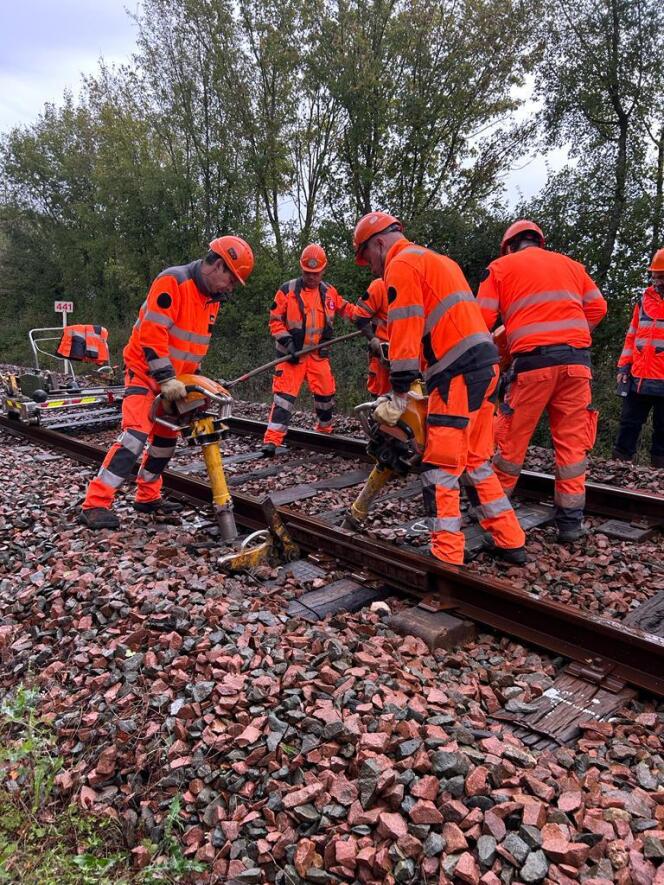Under the gaze of his four colleagues, Mario Bouchet, manager of the track team at Surgères (Charente-Maritime), kneels, his ear almost glued to the rail. With a glance seasoned by thirty-two years of experience, he checks the curvature before working on the “Jackson” on the ballast. The “Jackson” is a kind of jackhammer that moves the ballast by vibrating, which the SNCF has used since the 1980s, when we discovered the choreographies of Michael Jackson. The name stuck.
It allows you to stuff stones under the rail to raise it by a few tens of millimeters. We measure the result at the level. Then the team repeats the operation about ten meters further on, where a “measurement train” has reported an anomaly. “If there is a difference of two centimeters or more between the height of the two rails in a straight line, traffic is cut off”, explains Sébastien de Camaret, safety director for the Atlantic region of SNCF Réseau. If the difference is measured in tens of millimeters, we slow down the speed to 40 kilometers per hour instead of 120.
This small line where six TER return trips run between Niort and Saintes and a few freight trains is so old that it is necessary to constantly monitor and “fill” ballast every two to four weeks on certain portions. Some sleepers date from the 1960s, the rails from the 1970s. The base on which they rest must be reinforced. Further south, between Saintes and Bordeaux, we find elements of tracks from 1927, almost a hundred years old. They should have been changed a long time ago. Especially if this line is to serve as a plan B because of problems on the Cherbourg-Mouguerre railway highway for freight.
Cautious teams
The complete regeneration operation of the track is scheduled for the second quarter of 2024. But until the work has started, the teams on the ground are cautious: on the side of the tracks, near Villeneuve-la- Countess, two rails have been lying in the ditch since 2016, unusable. They already had to replace the old ones but “that year, work increased, particularly on the Tours-Bordeaux high-speed line, and the operation was finally canceled”explain the agents.
Seven years ago, there was already a shortage of personnel for the maintenance of small lines and it has gotten even worse. “The difficulties we experienced in the group due to the lack of train drivers, we will soon have due to the lack of maintenance agents”, warns a regional executive, who fears not having the staff to face the projects and fears that the GPSO line – the extension of the high-speed line to Toulouse – will be to the detriment of the so-called service lines fine areas of the territory, little frequented. Fer de France, the association which structures the railway sector, also recalls that the good organization of the work requires having visibility over five years on financing.
You have 40% of this article left to read. The rest is reserved for subscribers.
